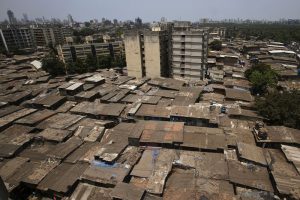
In this section we look at the governmental policies as well as NGO efforts in the process of gentrification and its implications for further proliferation of informality based on the journal Mumbai slums since independence: Evaluating the policy outcomes by Bardhan et al., (2015).
Before continuing, it is crucial to first understand the importance of the informal sector in Mumbai. While they play an important role in India’s economy, they are also ones most subject to the inequalities regarding gentrification (Chilvers, 2017).
The primary goal regarding the improvement of informal settlements is based on increasing the security of tenure. This assumption now shapes the interventions of the government and NGOS for service provision of the areas. As a result, the government of India has based policies classified to the three groups:
- Land and Housing

(Seelam, 2015) - Clearance and Eviction
- Upgradation and Redevelopment
The policies were based on a Western framework which largely ignored local sociocultural practices such as the informal sector that is part of an inherent dynamic of the South. Due to the failure to acknowledge local forces, the policies exacerbated the situation and led to further slum growth through dispossession and monopolized land.
As seen from the superimposing of the policies regarding gentrification in Mumbai, the process of gentrification “is a very Anglo-American one rooted in the social and economic changes occurring in postwar cities in Britain and North America . . . These are neither the dominant dynamics of the Indian city, nor of many and postcolonial cities currently being incorporated into gentrification research (Gherter, 2014).” Thus, we argue that it is imperative to acknowledge that all theory should be geographically specific, and realize that “the act of elevating the particular to the general carries with it the burden of asking what kinds of particulars are allowed to speak beyond their contexts (Gherter, 2014).”
Bardhan, R., Sarkar, S., Jana, A. and Velaga, N. (2015). Mumbai slums since independence: Evaluating the policy outcomes. Habitat International, 50, pp.1-11.
Bloomberg, (2015). Slum Redevelopment. [image]. Available at: https://www.bloomberg.com/news/articles/2015-02-23/modi-seeks-to-replace-crowded-india-slums-with-20-million-homes [Accessed 4 Mar. 2017].
CounterCurrent, (2016). Slum Clearance. [image]. Available at: http://www.countercurrents.org/napm060416.htm [Accessed 4 Mar. 2017].
Chilvers, J. (2017). Mumbai’s Informal Sector: Necessity or Nuisance?. Available at: https://www.youtube.com/watch?v=Xp6R90Tzwcw [Accessed 31 Mar. 2017].
Desai, V. and Loftus, A. (2012). Speculating on Slums: Infrastructural Fixes in Informal Housing in the Global South. Antipode, 45(4), pp.789-808.
Ghertner, D. (2014). India’s urban revolution: geographies of displacement beyond gentrification. Environment and Planning A, 46(7), pp.1554-1571.
Seelam, N. (2015). Slum Dwellers after Eviction. [image] Available at: https://scroll.in/article/776655/thirty-years-after-a-landmark-supreme-court-verdict-slum-dwellers-rights-are-still-ignored [Accessed 4 Mar. 2017].